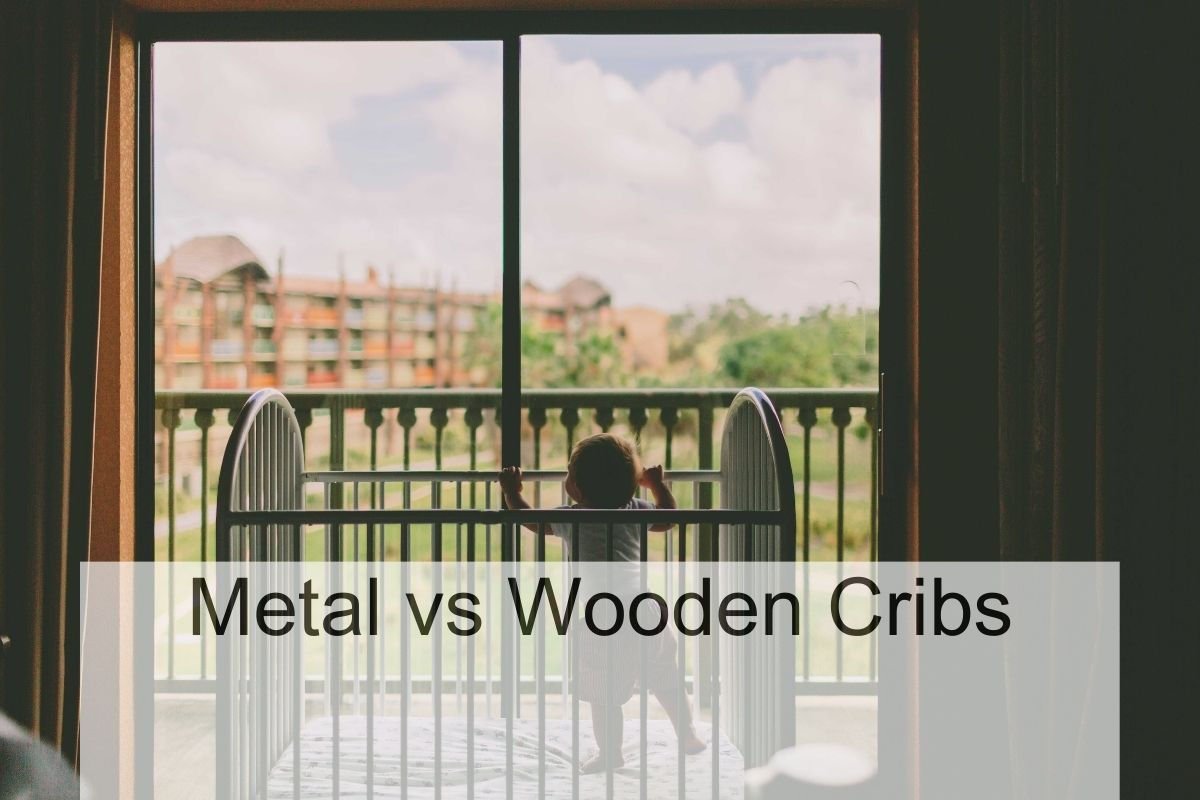Metal vs wooden cribs is a topic that many new parents consider when choosing a crib for their baby. As a first-time parent, I found myself researching the pros and cons of each material to make the best decision for my child. After conducting some research, I found that both options have their advantages and disadvantages.
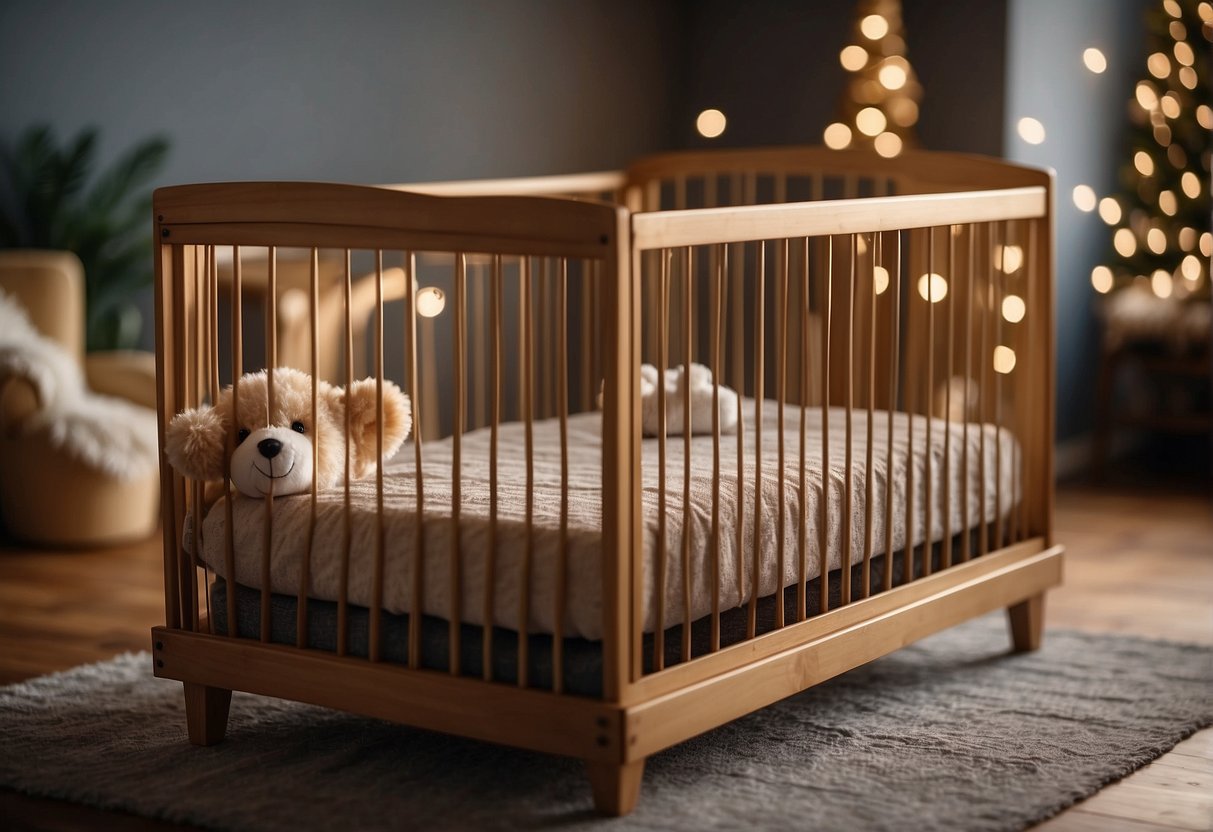
Metal cribs are known for their durability and sturdiness. They are often heavier than wooden cribs, which can make them more challenging to move around the room. However, the extra weight can also provide extra stability and safety for your baby. On the other hand, wooden cribs are often lighter in weight, making them easier to move around the room. They also have a classic look that many parents find appealing. Additionally, wooden cribs can be more affordable than metal cribs.
Benefits of Metal Cribs
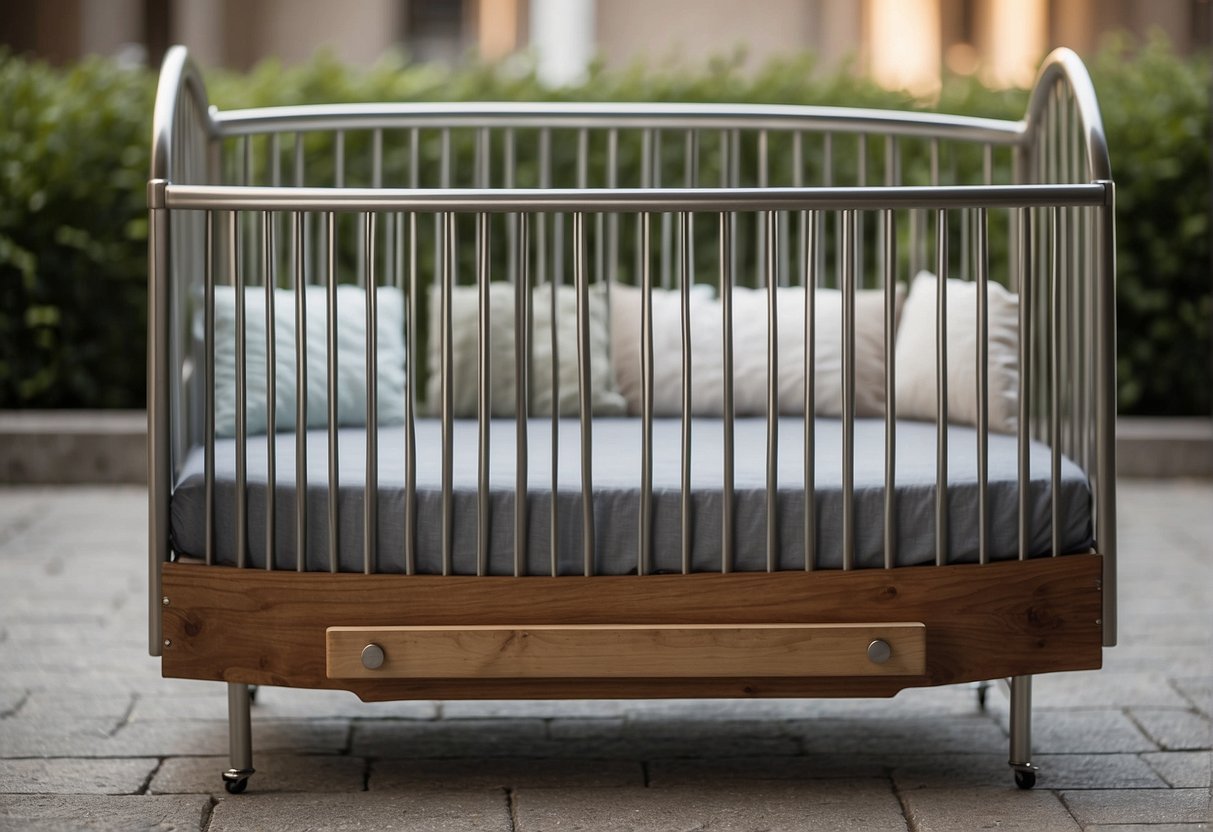
As a parent, choosing the right crib for your baby is a crucial decision. When it comes to metal cribs, there are several benefits that make them a great option for your little one. Here are some of the benefits of metal cribs that you should consider.
Durability and Longevity
One of the significant advantages of metal cribs is their durability and longevity. Unlike wooden cribs, metal cribs are sturdier and can withstand the test of time. They are made of high-quality materials that can resist scratches, dents, and other forms of wear and tear. This means that your metal crib can last for many years, even after your baby has outgrown it.
Modern Design Options
Metal cribs come in a variety of modern and sleek designs that can complement any nursery decor. They are available in different colors, finishes, and styles, making it easy to find one that suits your taste and preference. Whether you prefer a classic look or a more contemporary design, there is a metal crib that will meet your needs.
Ease of Cleaning
Another benefit of metal cribs is that they are easy to clean. Unlike wooden cribs, metal cribs do not absorb moisture, which makes them less prone to mold and mildew. You can wipe them down with a damp cloth or disinfectant spray, and they will look as good as new. This makes metal cribs a great option for parents who want a low-maintenance crib that is easy to keep clean.
Safety Considerations
When it comes to safety, metal cribs are just as safe as wooden cribs. They meet the same safety standards and regulations, ensuring that your baby is protected while sleeping. Additionally, metal cribs are less likely to splinter or crack, which can pose a danger to your baby. They are also heavier than wooden cribs, which makes them more stable and less prone to tipping over.
Advantages of Wooden Cribs
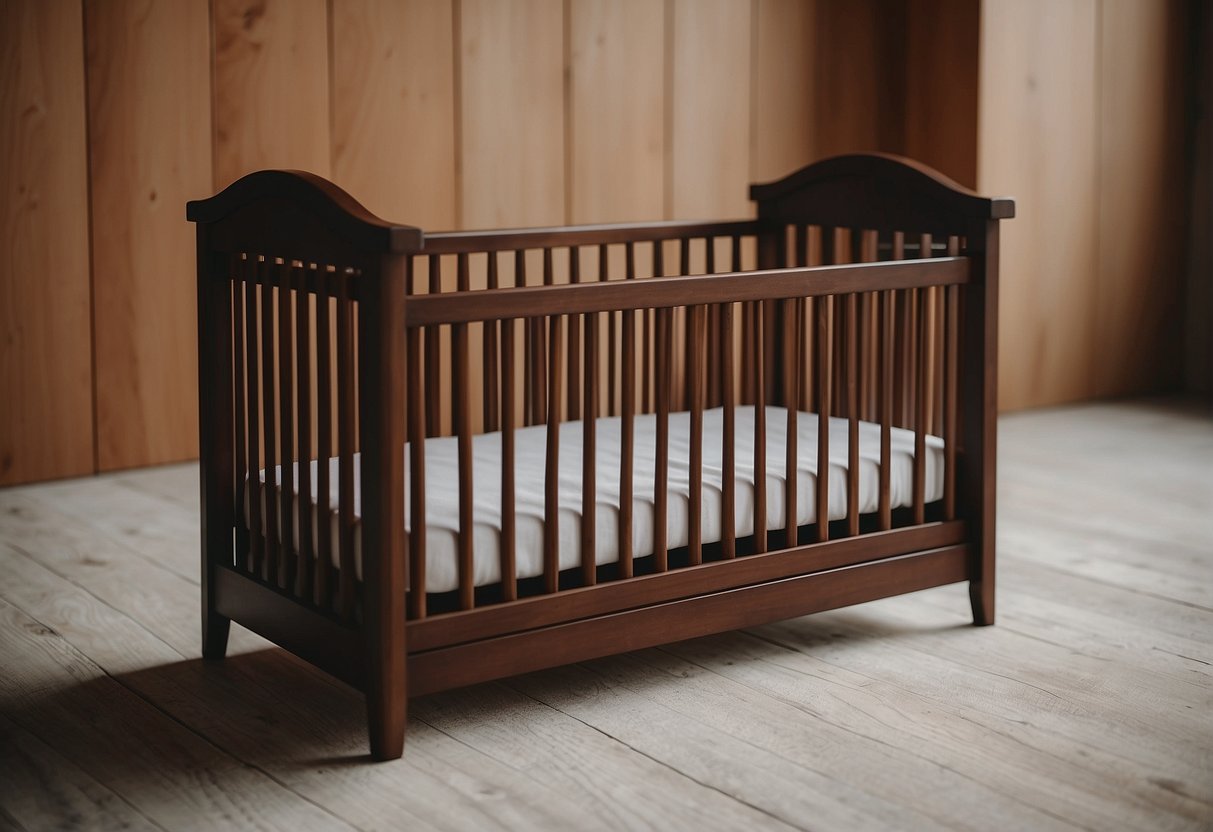
When it comes to choosing a crib for your baby, wooden cribs offer several advantages over metal cribs. Here are some reasons why I believe wooden cribs are a great choice for parents:
Natural Aesthetics
Wooden cribs have a natural beauty that is hard to match with metal cribs. The warm and natural look of wood can create a cozy and inviting atmosphere in your baby’s nursery. The natural grain patterns and textures of wood add character and uniqueness to each crib. Moreover, wooden cribs are available in a variety of wood types, such as oak, maple, and cherry, each with its own unique look and feel.
Warmth and Comfort
Wooden cribs are known for their warmth and comfort. The natural insulation properties of wood help to keep the crib warm in colder months and cool in warmer months. Wooden cribs provide a cozy and comfortable sleeping environment for your baby. Additionally, wooden cribs are less likely to conduct heat or cold, making them a more comfortable choice for your baby.
Variety of Styles
Wooden cribs come in a variety of styles, from traditional to modern, and everything in between. Wooden cribs can be designed to fit any decor style, and there are many different styles to choose from. Whether you prefer a classic look or a more contemporary design, you can find a wooden crib to suit your taste.
Potential for Customization
Wooden cribs offer the potential for customization. You can choose to have your wooden crib painted or stained to match the decor of your baby’s nursery. Additionally, you can add custom features, such as carved details or decorative accents, to make your wooden crib truly one-of-a-kind. The potential for customization allows you to create a crib that is unique to your family and your baby’s personality.
Safety Standards and Certifications
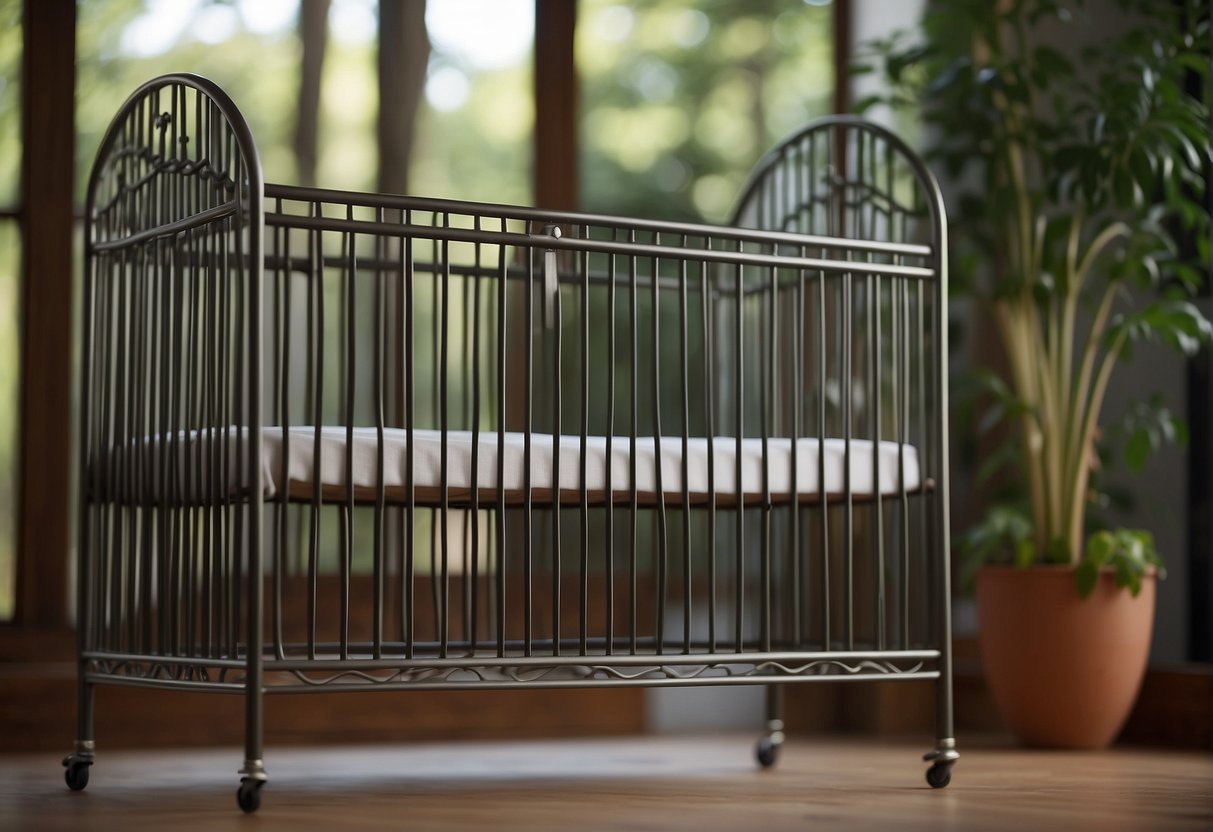
As a parent, the safety of my child is my top priority. When it comes to choosing between a metal and a wooden crib, I want to ensure that the one I choose meets all the necessary safety standards and certifications. Here are some things to consider:
Regulatory Compliance
In the United States, the Consumer Product Safety Commission (CPSC) sets the standards for crib safety. Both metal and wooden cribs must comply with these standards to be sold in the country. These standards include requirements for the spacing between slats, the strength of the crib’s structure, and the use of non-toxic materials.
Recall History
It’s important to check the recall history of any crib you are considering. Both metal and wooden cribs have been subject to recalls in the past due to safety concerns. Make sure to check the CPSC’s website for any recalls on the model you are considering before making a purchase.
Material Quality and Toxicity
When it comes to material quality and toxicity, both metal and wooden cribs can be safe options. However, it’s important to do your research and choose a crib made from non-toxic materials. Wooden cribs should be made from solid wood, free from any harmful chemicals or finishes. Metal cribs should be made from non-toxic metals, such as stainless steel or aluminum.
Cost Comparison

Initial Investment
When it comes to the initial investment, wooden cribs are generally more expensive than metal cribs. This is because wood is a more expensive material than metal. However, the exact price difference can vary depending on the type of wood and metal used, as well as the brand and design of the crib.
Maintenance and Upkeep
In terms of maintenance and upkeep, wooden cribs require more attention and care than metal cribs. This is because wood is a natural material that is susceptible to scratches, dents, and other forms of damage. Wooden cribs may also require periodic refinishing to maintain their appearance.
On the other hand, metal cribs are generally more durable and easier to maintain than wooden cribs. Metal is a stronger material that is less prone to damage, and it is also easier to clean and sanitize than wood.
Environmental Impact
As a parent, I want to ensure that I am making environmentally conscious choices when it comes to my child’s nursery. When it comes to choosing between a metal and wooden crib, there are a few factors to consider regarding their environmental impact.
Sustainability of Materials
Wooden cribs are often considered more sustainable than metal cribs. Wood is a renewable resource, and many manufacturers use sustainably sourced wood to make their cribs. Additionally, wooden cribs can be made with fewer chemicals than metal cribs, which can be better for the environment.
On the other hand, metal cribs are often made with materials such as steel or aluminum, which require a significant amount of energy to extract and manufacture. However, some manufacturers have begun using recycled metals to make their cribs, which can reduce their environmental impact.
Recyclability and Disposal
When it comes to the end of a crib’s life, wooden cribs are often easier to dispose of or recycle than metal cribs. Wooden cribs can be broken down and recycled or repurposed, while metal cribs may need to be disassembled and separated into their individual materials. Some metal cribs may also contain chemicals such as lead or phthalates, which can make them difficult to recycle.
Comfort and Convenience Features
As a new parent, I know that comfort and convenience are essential when it comes to choosing a crib for your baby. Here are some features to consider when deciding between a metal or wooden crib.
Adjustable Mattress Heights
Both metal and wooden cribs come with adjustable mattress heights, which is a feature that allows you to lower the mattress as your baby grows and becomes more mobile. This feature is especially useful for parents who want to keep their little ones safe from falls.
Convertible Options
Another feature to consider is whether the crib can convert into a toddler bed or a full-size bed. Both metal and wooden cribs can be converted into different bed sizes, but wooden cribs are often more versatile in this regard.
Many wooden cribs can be converted into a toddler bed, a daybed, and a full-size bed with a headboard and footboard. On the other hand, most metal cribs can only be converted into a toddler bed and not a full-size bed.
It’s important to note that convertible cribs are often more expensive than non-convertible ones. However, if you’re looking for a crib that will last for several years, a convertible crib may be a worthwhile investment.
Space Considerations
When it comes to choosing between a metal or wooden crib, space considerations are a crucial factor to keep in mind. Here are some things to consider:
Crib Size and Room Fit
The size of the crib and the fit in the room are important factors to consider when deciding between a metal or wooden crib. Wooden cribs tend to be bulkier and take up more space than metal cribs. If you have a small nursery or limited space, a metal crib may be a better option. Moreover, metal cribs come in various sizes and shapes, making them more versatile in terms of room fit.
Portability and Storage
Another thing to consider is the portability and storage of the crib. If you plan on moving the crib frequently or want to store it away when not in use, a metal crib may be a better option due to its lightweight and easy-to-dismantle nature. On the other hand, wooden cribs are sturdier and more durable, but they are also heavier and more difficult to move around. Additionally, wooden cribs may require more storage space when not in use.
Consumer Reviews and Feedback
As a parent, I understand the importance of choosing the right crib for my baby. I did my research and read through numerous reviews to make an informed decision. Here are some of the common feedback from parents who have purchased metal and wooden cribs.
Parental Preferences
When it comes to the material of the crib, many parents have a personal preference. Some prefer the classic look of wooden cribs, while others like the modern and sleek look of metal cribs. Additionally, some parents prefer the sturdiness and durability of metal cribs, while others appreciate the warmth and natural feel of wooden cribs.
Product Longevity Feedback
Another important factor that parents consider is the longevity of the product. Many parents have reported that wooden cribs tend to last longer than metal cribs. They have also noted that wooden cribs are more resistant to wear and tear, and can be passed down to younger siblings or even sold.
However, some parents have also reported that metal cribs are more durable than wooden cribs. They have noted that metal cribs can withstand more weight and pressure, and can last longer if properly maintained.

